Reseller for Psion Teklogix
Psion Teklogix Inc. is a leading provider of rugged mobile computing solutions to a range of industries around the world. For over three decades, companies have turned to Psion Teklogix to empower their mobile workforces by increasing efficiency and productivity. Psion Teklogix offers a wide range of rugged mobile computers fully supported by responsive and reliable customer service and a creative approach to solving your mobility problems.
IWS adds DC Expert software tool
Insight Holdings, with supply chain focused, warehouse optimization software installations worldwide, has named IWS as licence holders, as well as value-added re-sellers of their DC Expert software in Ontario. In addition to being a warehouse space planning and design tool, this powerful product quickly and effectively assists in determining the best methods, practices and equipment required to optimize the overall warehouse performance.
Carousel Dealer Appointment
White Systems has appointed IWS as an authorized Canadian distributor and integrator of their proven line of Automated Storage & Retrieval Systems, which includes Horizontal Carousels, Vertical Carousels, Vertical Lift Modules, and Pick-to-Light products.
IWS Welcomes Rachael Morrison
Integrated Warehouse Solutions would like to welcome Rachael Morrison to the sales team. Rachael brings a strong background in designing cost reduction solutions and managing installation teams to see projects through from start to finish.
Pallet Racking
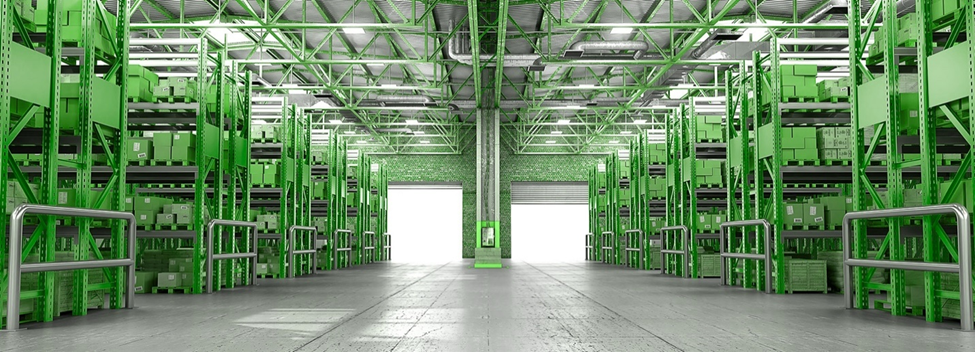
For the last 50 years pallet racking has been used to maximize the vertical height warehouses.
There are many types of pallet racking. Pallet racking should be designed to fit the required volume of product and handle the necessary throughput. Many pallet rack systems are poorly planned and often have more space dedicated to aisles rather than product storage. It is essential that the racking system be matched or integrated with the right type of forklift to maximize the efficiency.
Some examples of racking systems are:
Single Deep Selective Pallet Racking
Each and every pallet is fully accessible and easy to see, ideal for a variety of products and First In First Out (FIFO).
Double Deep Racking
Allows up to 60% more pallets to be stored than single deep selective rack. (recommended when there are more than one of each skid) requires extra bottom beams, has some wasted locations if there is only one pallet to be placed in a double deep location or extra handling if different pallets end up buried behind another. Typically requires a hand-off to a second forklift to load trucks.
Very Narrow Aisles
Allows up to 60% more pallets to be stored than single deep selective rack by simply minimizing the aisles. Has all the same benefits as single deep selective rack. Reduces the amount of warehouse space needed which reduces overall costs or allows
Drive in Racking
These are designed for very dense storage with very little selectivity. Typically stores one type of product or lot per lane (4-6 deep x 3-4 levels high) 12-24 pallets per lane. Good for bulk pallet storage when pallets might be not be stackable. Can have high number of partially used locations due to limited selectivity. Once actually usage is considered it may realize similar gains to double deep and very narrow aisles.
Push Back Rack
Similar to drive-in racking but every storage level can be used for different products or lots. Push back racks have a vertical disadvantage compared to drive in as slope needs to be factored as well as bottom beams and carts.
Flow Rack
Best for high throughput. Load one end and unload at the other. Can be up to 24 pallets deep (truck load) Each level can be used for a product or lot or shipment. Has the same vertical disadvantages as pushback. Like pushback and drive-in, actual usage may be considerably lower than the available locations unless there are just the right number of pallets to be loaded into each location.
Shuttle Rack
These are similar to pushback but doesn’t have the same vertical loses. Uses motorized carriers that add costs and maintenance. Carriers/shuttles also need to be moved to the lane that needs to be loaded/unloaded.
The key will be the integration between the storage system and the right material handling equipment. Here are some aspects to be aware of:
- Making the best use of space
- Review how product comes in and how it goes out
- Pallet in/Pallet out
- Pallet in/ Pieces out
- This will influence which truck needs to be used and where the product will be placed
- Aisle size should be kept to a minimum
- Travel needs to be minimized
- Touches need to be minimized
- Material Handling Equipment
Contact
Click here to contact IWS to learn how we can meet your pallet racking needs—at rates that will put a smile on your face.
Material Handling Equipment for Warehouse Optimization
Integrated Warehouse Solutions has deep insights into material handling equipment for warehouse optimization. We are keen to impart this knowledge to our customers—and potential customers. Today, we are going to have a look at the various types of equipment used in warehouse operations to handle materials of all kinds.
Sit-down counterbalanced forklift trucks
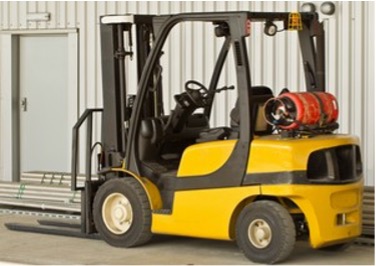 Forklifts come in various types, but sit-down counterbalanced forklift trucks are the most common. The forks on a counterbalanced forklift truck extend directly from the truck, usually in the front, allowing the operator to drive to the exact loading or racking point. This is possible because of their in-built counterbalanced weight, usually in the rear. These counterbalance weights allow the vehicle to carry heavy loads in the front. The vehicles can be either three-wheeled or four-wheeled.
Forklifts come in various types, but sit-down counterbalanced forklift trucks are the most common. The forks on a counterbalanced forklift truck extend directly from the truck, usually in the front, allowing the operator to drive to the exact loading or racking point. This is possible because of their in-built counterbalanced weight, usually in the rear. These counterbalance weights allow the vehicle to carry heavy loads in the front. The vehicles can be either three-wheeled or four-wheeled.
Sit-down counterbalance forklift trucks require the largest aisles—typically 12-14 feet—which reduces the amount of product that a warehouse can store. They can drive between rack to trailer, but do not have the vertical reach that some warehouses require.
Propane forklifts are often preferred because they:
- Provide consistent power delivery all daylong;
- Are relatively cheap and easy to use, and;
- Deliver more power on ramps and grades.
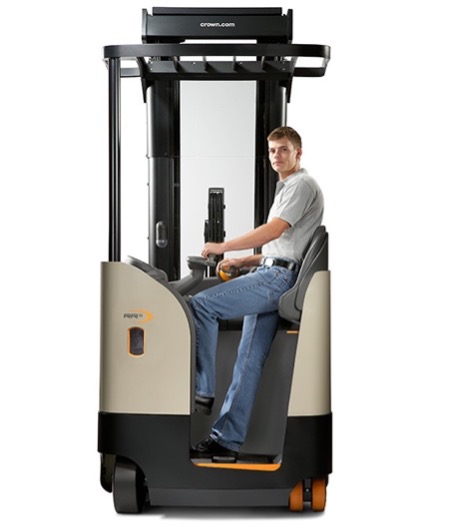 Diesel forklifts offer even more power and are cheaper to run but do have serious emissions issues. The other option is to go electric. Electric forklifts are the cleanest and cheapest to run but are more expensive to buy. Time required for battery charging can also present challenges in a multi-shift operation.
Diesel forklifts offer even more power and are cheaper to run but do have serious emissions issues. The other option is to go electric. Electric forklifts are the cleanest and cheapest to run but are more expensive to buy. Time required for battery charging can also present challenges in a multi-shift operation.
Stand-up reach trucks
Stand-up reach trucks are battery-powered and primarily used on medium-sized aisles 8-10 feet wide. They are easy to get on and off when checking or picking items and can lift higher than most counterbalance forklifts. Stand-up reach trucks are usually too tall or don’t have enough ground clearance to load trucks, so another piece of equipment is required, adding to overall equipment and maintenance costs.
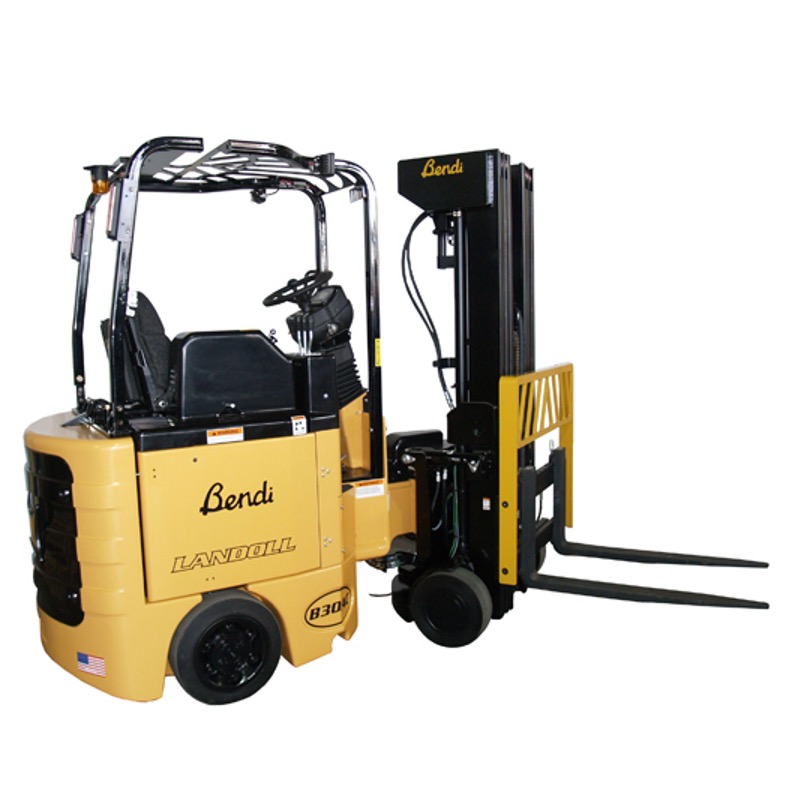
Very Narrow Aisle (VNA) articulated forklift trucks
VNA articulated forklift trucks are versatile, multipurpose machines ideal for warehouse optimization. They are usually designed for aisles 6.5-8 feet wide and can work trailer to rack or rack to trailer, eliminating double handling. They can articulate right or left, just ahead of the operators’ feet to minimize the turn radius. This means that, compared to sit-down counterbalanced forklift trucks, they can be used in smaller buildings to store the same amount of product, which translates to lower facility costs, including construction, heating and lighting. Since most VNA trucks are electric they generate zero emissions, making for a healthier work environment.
Man-up turret trucks
Man-up turret trucks are electric vehicles that tend to be used in warehouses with very narrow aisles, typically 6 feet wide. These vehicles realize their full potential in warehouses where operators are seeking to take full advantage of building height. Being large vehicles, turret trucks require wire guidance, which increases cost and means that they are aisle dedicated as they are inefficient outside of their aisle. Man-up turret trucks also require a super flat floor to work on as they can get stuck in small dips in the floor. Due to their large size other pieces of equipment are required to move materials around the facility and to load trucks.
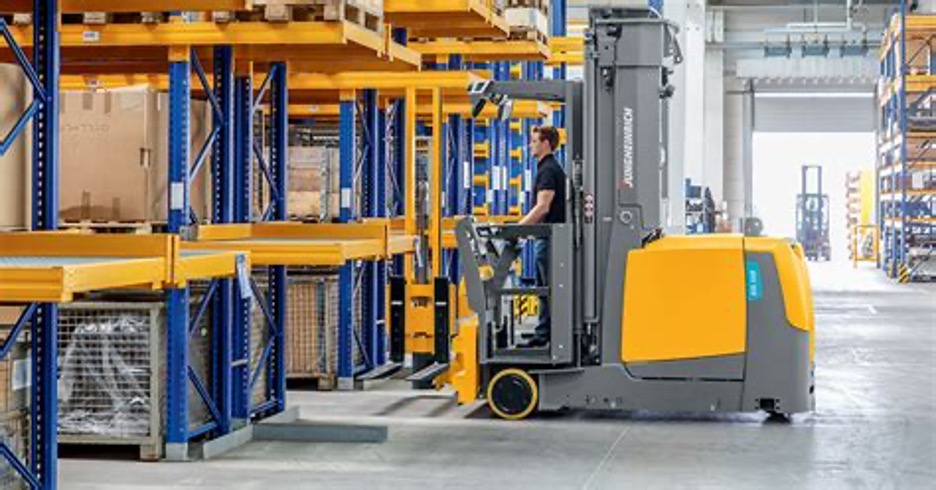
Man-down turret trucks
Either electric or propane, man-down turret trucks also work in a very narrow aisles, typically 4.5-6 feet wide which makes them effective tools for warehouse optimization. They can work trailer to rack and rack to trailer in many circumstances, eliminating the need for other pieces of equipment. They are advantageous for single-truck operations and do not require a super flat floor. The mast swings to the right eliminating, the need to turn the truck at all when handling pallets.
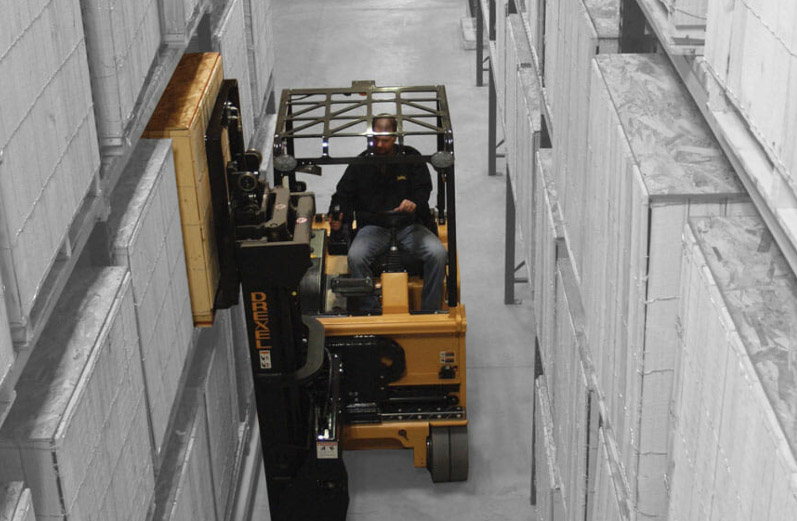
Contact
As warehouse optimization plays a significant role in reducing overall operational costs, we heartily invite you to Contact IWS today. Let us review your material handing needs and assist you in selecting the right material handling equipment for your supply chain operations.